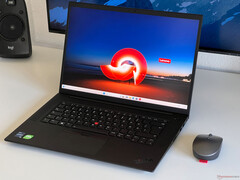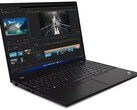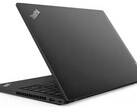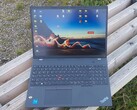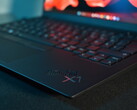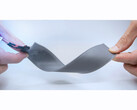Those familiar with Lenovo's ThinkPad models are likely acquainted with the ThinkPad X1 series, which has long represented the company's top business products. This includes the compact ThinkPad X1 Carbon and, in recent years, the larger ThinkPad X1 Extreme, catering more towards multimedia use. The X1 Extreme was always paired with a ThinkPad P1, which used professional GPUs rather than GeForce graphics cards. Lenovo's announcement of the sixth-generation ThinkPad P1 came as a surprise, considering there was no successor to the ThinkPad X1 Extreme. The ThinkPad P1 now serves both functions and is available with regular consumer GeForce GPUs. The challenge here is that many people were familiar with the term ThinkPad X1 Extreme, which may not be as strong as the ThinkPad P1.
Apart from this decision, the sixth-generation ThinkPad P1 is devoid of surprises. Lenovo has maintained the same case and uses either conventional cooling (for GPUs with a TGP of 65 watts) or vapor-chamber cooling (for GPUs with a TGP of 80 watts). Nvidia's newest graphics cards that are utilized, are either the consumer versions GeForce RTX 4060 Laptop, RTX 4080 Laptop, and RTX 4090 Laptop or the professional chips RTX 1000 Ada, RTX 2000 Ada, RTX 3500 Ada, RTX 4000 Ada, or RTX 5000 Ada. The new RTX 2000 Ada was set up in our test device, offering a significant performance gain over the old RTX A2000 and even outperforming the preceding RTX A3000 despite having a lower TGP. In terms of gaming performance, the RTX 2000 Ada is technically equivalent to the GeForce RTX 4060 laptop. Lenovo has chosen Intel's latest Raptor Lake processors for the CPU, despite the fact that they do not provide a considerable performance improvement over the previous Alder Lake ones.
There have been notable changes to the display options as well. The standard panel remains an IPS screen with a resolution of 1,920 x 1,080 pixels and a brightness of 300 cd/m². Additionally, there is a higher-resolution IPS display offering 165 Hz and a brightness of 500 cd/m², as well as a 4K OLED screen, both available as alternatives. All versions come with optional touch functionality and factory-calibrated. The previous year's 4K IPS screen with Adobe RGB coverage, on the other hand, is no longer available. Our test device was equipped with the optional IPS panel boasting a resolution of 2,560 x 1,600 pixels and a brightness of 500 cd/m². It proved highly impressive in our analysis, benefiting from its high brightness, rapid response times, and absence of PWM usage. The color accuracy was excellent due to both factory calibration and subsequent user adjustments, rendering additional calibration unnecessary. The only drawback of this panel is its limited coverage of the sRGB color space. Depending on the intended use, users might consider the optional OLED screen, which also has disadvantages such as PWM usage and higher power consumption.
The battery runtimes are excellent overall, and there are no significant drawbacks that would dissuade a purchase. For more in-depth information on the ThinkPad P1 G6, please refer to our detailed review:




